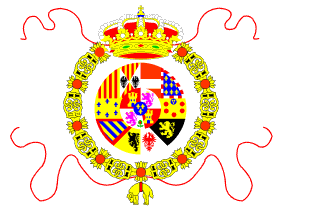Table of Contents
Spain (Look to the West)
In Look to the West, Spain stands at a crossroads in its history. The 18th century, much like OTL, saw a decline for the country as its status as premier imperial power was usurped by Britain and France. Yet that decline was also steeper than OTL as Spain lost control over Peru and Rio de la Plata, which successfully became independent as the United Provinces of South America.
In the Jacobin Wars, Spain gave succour to the Dauphin and her armies joined the anti-Republican coalition, but stalled after conquering Navarre from Revolutionary France, with the clear intent of incorporating it into Spain. After this the Dauphin abandoned Spain for Britain as a site to build an army in exile, along with Leo Bone. The Spanish army, low on morale due to incoherently expressed war objectives, managed to occupy the South of France but was beaten back from Bordeaux. Finally, after the withdrawal of Britain from the war and the successes in Germany, Republican France turned its full might upon Spain…
Government
Strictly speaking, there is no entity called 'Spain': the King of Spain is technically the King of a huge long list of historical states which were never constitutionally integrated. There is a single Cortes (parliament) whose power was eroded throughout the 18th century thanks to Enlightenment ideas of absolutism, and the historical states have local Audiencias, which are primarily judicial courts but also sometimes take on some of the character of local legislative assemblies. Unlike Britain, Spain does not have an even semi-official post of prime minister, but the chief minister is nonetheless unofficially recognised.
After the defeat in the Second Platinean War and the loss of the United Provinces, the Spanish government pursued a policy of granting greater power to the Audiencias of the remaining colonies in New Spain and New Granada, as well as their Viceroys.
After the First War of the Polish Succession, the heir to the Spanish throne (the later Charles III) was made the King of Naples and Sicily. Once Charles acceded to the Spanish throne, his second son, also called Charles, was made King of Naples and Sicily and then his descendants would accede by the usual principle of primogeniture. Charles' first son Philip eventually became King of Spain - in TTL he was not mentally handicapped.
Spain fought the French in a lacklustre manner for the early stages of the Jacobin Wars, although briefly managing to occupy Bordeaux in response to the French attacking Parma in Italy. However, the country was rapidly crushed by a 'war of lightning' offensive by General Boulanger after the withdrawal of Britain from the war. This was facilitated by a civil war raging in Spain over the succession, between the 'Carlistas' who favoured the king's eldest son Charles, and the 'Felipistas' who claimed the King had changed the succession to his second son Philip. The Carlistas ended up fleeing over the sea to form the Empire of New Spain, while the Felipistas triumphed only to be conquered by the French. The French occupation of Spain was much milder than OTL's equivalent, with the governor Drouet working through Philip VII as his puppet, and Spanish Kleinkriegers or “guerillos” were not as widespread or famous as their German and Italian counterparts (in contrast to OTL). The French-backed Felipista Spain reluctantly assisted France in attacks on Portugal, which ultimately failed thanks to Lisieux constantly withdrawing troops for his projects elsewhere, leaving the French force in Spain undermanned and forced to rely more on Spanish troops.
Towards the end of the Jacobin Wars, the French were sufficiently weakened in Spain to be rolled back by the Portuguese and Neapolitans, who had landed on Spain's Mediterranean coast. The two of them split Spain between them, with “Castile” being ruled by the infant heir (after Drouet killed Philip VII) as a Portuguese puppet, and “Aragon” placed into personal union with Naples and Sicily.
List of Monarchs of Spain (House of Bourbon) since 1727
1724 (restoration) - 1746: Philip V
1746-1761: Ferdinand VI
1761-1788: Charles III
1788-1801: Philip VI
1801-1807: Civil war - claimants Philip VII, Charles IV (the Prince of Asturias) and Charles IV (Charles VIII and VI of Naples and Sicily)
1807: Division into Castile and Aragon - Castile under Alfonso XII [1807-1832], Aragon under Charles IV (Charles VIII and VI of Naples and Sicily) [1807-1811]; Gennaro I [1811-1829]; Luigi I [1829-1832]
1832: Spain reunited under Charles IV (the former Prince of Asturias)
1832-: Charles IV
List of chief ministers of Spain since 1726
1726-1734: Juan Bautista Orendayn y Azpilcueta
1734-1736: José Patiño y Rosales
1736-1748: Sebastián de la Cuadra y Llarena
1748-1755: Zenón de Somodevilla y Bengoechea, Marquis of Ensenada (first time)
1755-1761: José de Carvajal
1761-1767: Zenón de Somodevilla y Bengoechea, Marquis of Ensenada (second time)
1767-1773: Richard Wall
1773-1784: Bernardo Tanucci
1784-1798: José Moñino y Redondo, conde de Floridablanca
1798-1803: Francisco Saavedra de Sangronis
1803-1807: In abeyance
1807-: Francisco Rocío Villaamil y López
Flag
Spain originally had no official flag rules, much like France. In the 1780s (like OTL) a competition was held to bring about a more distinctive naval war ensign that did not have the same white background as that of France and the British white ensign. However, unlike OTL, due to the Second Platinean War, the eventual flag was also designed to avoid resemblance to the mostly yellow flag of the United Provinces. Because the Spanish 'state' technically did not exist, it had no flag beyond the royal banner, and so the war ensign eventually became the state flag (again like OTL).
Old white war ensign (pre-1788) :
New war ensign and eventual national flag (post-1788) :
(This is one of the designs rejected in the OTL flag contest). Note the 'Scandinavian' proportions, which may have influenced the later decision by Denmark to not reuse the similar Union of Kalmar flag after Sweden was brought back into personal union.

